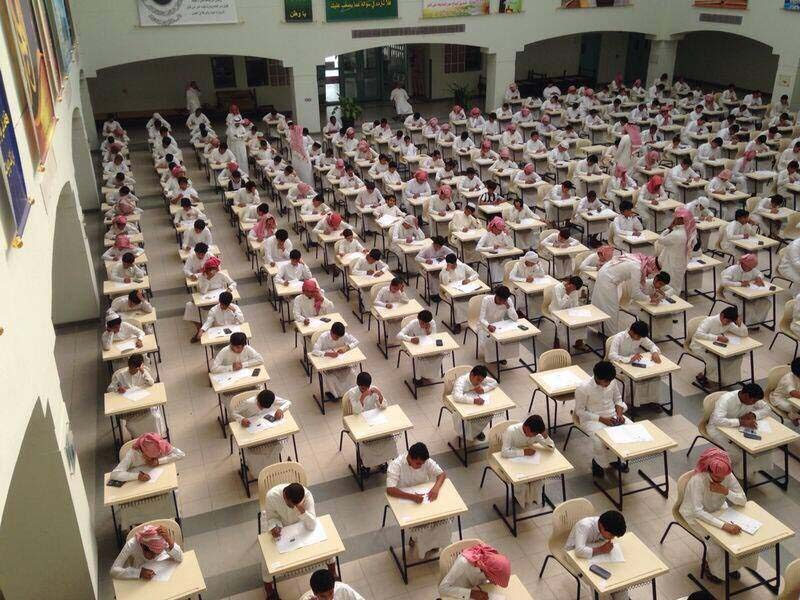
The price of education in Qatar has risen 11 percent in the last year, contributing to an overall increase in the cost of living here by 1.6 percent since July 2014, newly-released government figures show.
That’s the biggest year-on-year jump in any category in last month’s Consumer Price Index (CPI), which charts the average costs of a basket of common goods and services in the country.

The overall statistic is general and doesn’t include any details about whether the rise takes into account the cost of kindergartens, schools or universities, or the monetary value of other fees and administrative costs parents are shouldering.
But because most schools and pre-schools require tuition to be paid in advance of the new academic term in September, the CPI figures suggest that many families have seen fee hikes this year.
And because most Qataris receive free public education and subsidized private schooling, the CPI figure is likely lower than the cost being borne by many expat parents.
Tuition hikes
The new figures released by the Ministry of Development, Planning and Statistics (MDPS) echo a similar story earlier this year, when the CPI figures for January 2015 also showed a rise of more than 11 percent compared to the average spend on education costs in 2013.
However, it is still some way short of the of the 27.6 percent year-over-year increase reported in April 2014 by the Supreme Education Council (SEC).
At that time, the council found that the average annual cost of educating a child in Qatar stood at QR13,026 in 2012-13, up from QR10,208 the previous year.
Also contributing to the overall slight rise in average living costs for July this year was a 6.3 percent increase in the cost of tobacco, while spending on hotels and restaurants for the month was 3.7 percent greater than the same time last year.
Other increases include:
- Transport – up 3.2 percent on July 2014;
- Housing, electricity and gas – up 2.3 percent;
- Clothing and footwear – up 1.6 percent; and
- Food and drink – up 0.9 percent.
However, spending on recreation and cultural activities was down 2.8 percent, compared to July 2014.
Schooling costs
Fees in Qatar’s private schools vary considerably, from QR10,000 a year to upwards of QR60,000 in fees and additional charges a year, depending on the curriculum offered and facilities provided.

All schools must apply to the SEC for approval before they can raise their fees and last year, the SEC introduced a new protocol for deciding on tuition increases, amid concerns from some parents about regular hikes in the cost of fees each year.
The council decides the maximum increase permissible for each school, based on criteria including the financial situation of the school, whether it has increased fees previously and parents’ and pupils’ assessment of the teachers.
In 2014, the director of the SEC’s Private Schools Office, Hamad Mohammed Al Ghali, said that only a third of schools’ applications for an uplift had been accepted, and most were limited to no more than a 4 percent increase.
However, schools have argued that the SEC’s limitations don’t take into account their rising costs, particularly in terms of teachers’ salaries and housing needs.
One popular international school in Qatar told Doha News that it sought a tuition increase to cover the cost of teachers’ apartments, which had gone up 30 percent over the past two years. It also needed the extra revenue to upgrade school facilities, a representative said.
Lack of school places
As the state’s population continues to rise to meet the deadlines for numerous ongoing infrastructure projects, pressure on school places continues to be one of the biggest issues facing the state.
Figures that have just been released by the MDPS for the academic year 2013-14 show that the number of students in Qatar’s private and independent (government-run) schools stood at 245,000, an increase of 5.6 percent from the previous year’s total school roll.
More than half of all students registered (59 percent) attended private schools, which were served by 9,829 teachers – a ratio of of nearly 15:1. This compares to the state sector, in which there were nearly 99,00 pupils with 13,326 teachers – just over seven pupils per teacher, on average.
For the coming academic year, authorities have been trying to build more schools to help meet the demand for places. In February, public works authority Ashghal said it was constructing 33 new schools and kindergartens ready for the start of the new year next month.
While the SEC hasn’t revealed the names of the new schools, they are likely to be a mix of independent and private schools.
Thoughts?







